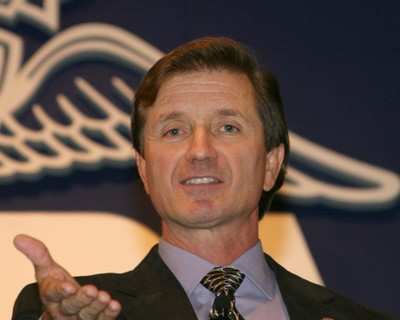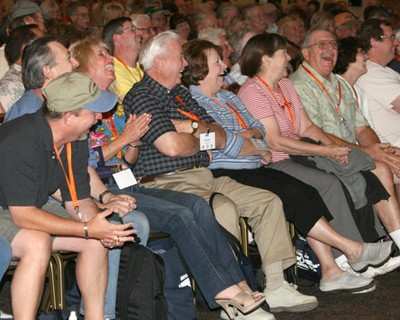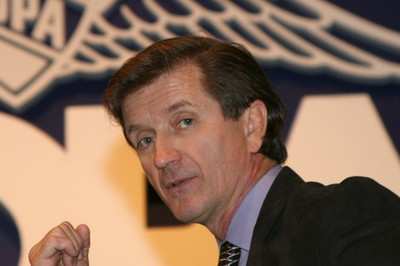Presents 'Yoke And Pedal: Secrets To Better Pilot
Proficiency'
Rod Machado's presentations are almost always well attended --
AOPA Expo 2006 was no exception. His presentation titled Yoke
and Pedal: Secrets to Better Pilot Proficiency was both
educational and entertaining; a Machado hallmark, and the reason he
is such a popular speaker.

After a few jokes to warm up the crowd, Machado got down to
business, but was never a few seconds away from a joke or humorous
story. The focus of the hour long session was "There's more than
one way to fly an airplane."
According to Machado, we tend to fly the way we are initially
taught, but either forget or never realize there are other ways to
get the job done. In other words, pilots should not necessarily
restrict their techniques to what they have learned in their
primary training.
"If you develop a procedure that is comfortable to you, and is
safe, then you should not be afraid to use it. It doesn't matter
how you do it, as long as it works and is safe and you are good at
it," said Machado.

Machado gave examples of somewhat unconventional techniques that
have met with success for his students. The first he calls
"Sampling the Response" is a technique used to smooth out those
rough landings. By using small, constant fore and aft movements of
the yoke to control pitch while flaring to land, the pilot can feel
for the "sweet spot," and avoid over controlling to the point where
elevator control is lost.
Hand-in-hand with the above technique (no pun intended), he
suggests trying two hands on the yoke in the flare. Some
instructors deem this practice unacceptable because they believe
pilots must always guard the throttle with one hand. Machado argues
the danger incurred by the fraction of a second needed to get your
hand back to the throttle is offset by an increase in the ability
too feel what the airplane is doing in the flare -- arguably one of
the most critical times of flight in terms of direct aircraft
control.

Machado cautions this technique should not be used by student
pilots who may not have developed the necessary muscle memory
needed to locate the throttle quickly in the event of a go-around.
He also emphasized all of his suggestions were just that,
suggestions, and not everyone would benefit or be comfortable with
them.
Another unconventional idea Machado presented: Should you always
try to land on the numbers? Not necessary, he says. His reasoning
is pilots become so focused on hitting the numbers they neglect
other important duties such as scanning for traffic. Instead, says
Machado, follow the FAA's recommendation of landing on the first
1/3 of the runway. He believes this also allows a margin of error
in the event of a wind shear, diminishing headwind or even simply a
minor misjudgment.

Other controversial techniques Machado discussed included using
trim to assist in landing nose-heavy airplanes, and when to retract
the landing gear on takeoff.
In closing Machado said, "Most importantly, go out and get
training to make yourself comfortable flying. We have an obligation
not to scare ourselves. Aviation is supposed to be fun, don't let
yourself or anyone else take the fun out of it."
 ANN's Daily Aero-Linx (05.02.24)
ANN's Daily Aero-Linx (05.02.24) ANN's Daily Aero-Term (05.02.24): Touchdown Zone Lighting
ANN's Daily Aero-Term (05.02.24): Touchdown Zone Lighting Aero-News: Quote of the Day (05.02.24)
Aero-News: Quote of the Day (05.02.24) ANN FAQ: Contributing To Aero-TV
ANN FAQ: Contributing To Aero-TV NTSB Final Report: Cirrus Design Corp SR20
NTSB Final Report: Cirrus Design Corp SR20






